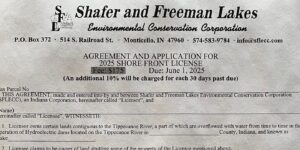In fact, both lakes are over an inch above their normal levels.
The Winamac USGS Gauge reads 350 cubic feet per second (cfs) as a flow rate at present.
When the 24-hour daily average flow rate at Winamac is 300 or more, the Tippecanoe River will no longer be in an Abnormal Low Flow (ALF) event. If this flow rate goes below 300 cfs for a 24-hour period, the river will be back in an ALF event. I tell you this because I want you to know the reality of the present situation created by US Fish and Wildlife Service.
This time of the year, between the last of July through the first of October, is the most likely time for a river drought, or low water flow rates, to occur in a river. A major reason for the low flow rate is most plants are using the most water in their annual cycles. Trees with their full canopy of leaves are pulling amounts of water from the ground for themselves and the grain they are producing. If there is more water being used from the ground than is going into the ground, the ground water starts to decrease. If adequate rain does not replace the ground water, the ground pulls water from ponds, lakes, streams, and rivers. In the case of a river, instead of all the water that gets into the river flowing down to where it ends, water flows out of the river into the ground through its banks and bottom, resulting in a reduced flow rate down the river.
In short, to keep flow rates up, we need more water running into the river from the watershed and rainfall, than is being pulled into the ground.
Hoping for more rain,
Joe Roach



